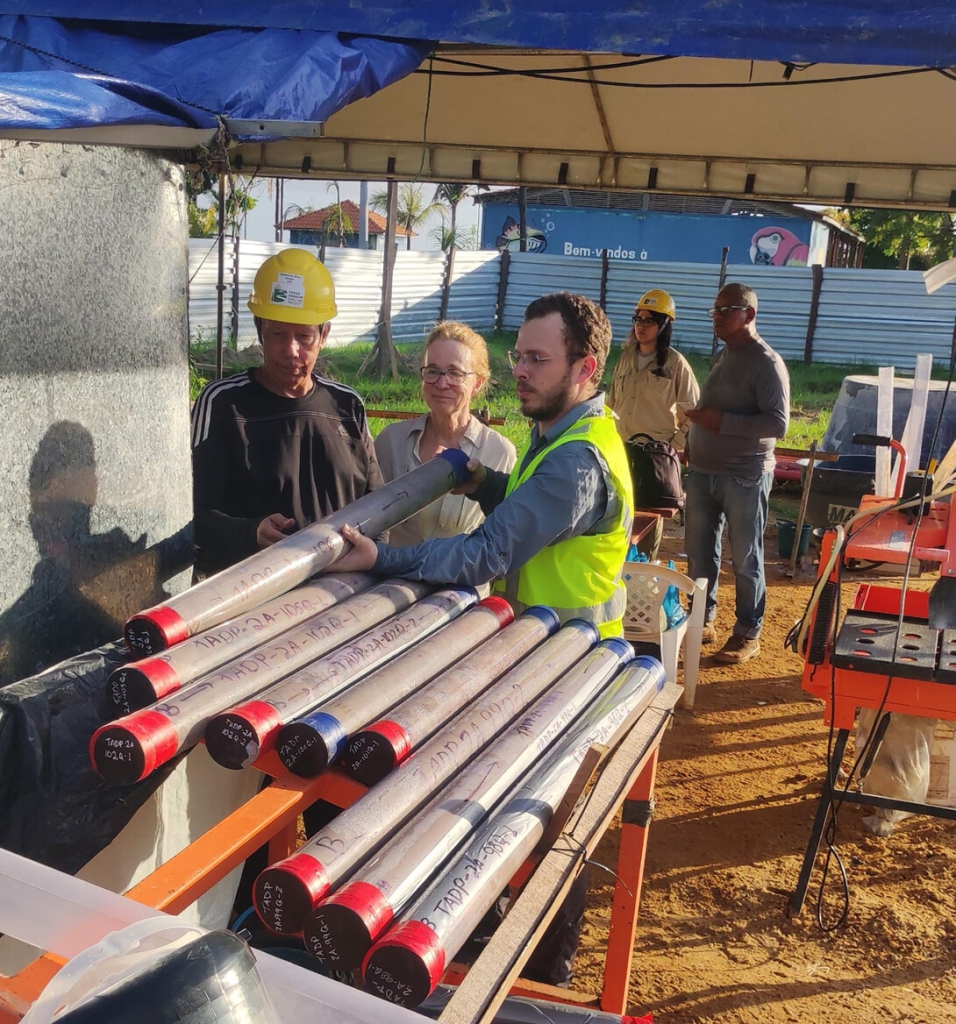Earth and Atmospheric Sciences
Kristina Jackson, July 18, 2024
Fritz explores depths of Amazon River Basin
Sherilyn Fritz recently spent time in Brazil working to penetrate mysteries of the geologic record of the Amazon River Basin.
Fritz, George Holmes University Professor of Earth and Atmospheric Sciences and Biological Sciences at the University of Nebraska–Lincoln, spent two weeks leading a team seeking information about the history of the climate, geology and biodiversity of tropical South America. The Trans-Amazon Drilling Project aims to reconstruct this history through the study of sediment cores drilled from the riverbed.
“You can look at the modern conditions that help maintain biodiversity, like the nice equitable temperature, high rainfall, topographic variability, but you can also ask the question, how did it come to be,” Fritz said.
Fritz was one of the lead principal investigators, along with researchers from Duke University and the University of Minnesota, as well as colleagues from Sao Paulo and Niterói, Brazil. They have been working toward the project for nearly 10 years. Funding was provided by the International Continental Drilling Program, the National Science Foundation, the Smithsonian, and the Sao Paulo Research Foundation.

The team is studying sediment cores collected at two Amazon River basin sites. They had a rig set up in the west near the Andes Mountains from June to December 2023 and drilled down more than 900 meters. They started drilling at the current site downriver to the east in May. Crews should be working at that site until October.
Fritz and the team set out to learn more about conditions over the course of many years that could have contributed to the region’s biodiversity. Historically, hypotheses have included that a stable climate resulted in fewer extinctions, or that new species came about following specific events like the division of a population by a new mountain range.
“Tropical South America has the greatest biodiversity of anywhere on the planet for plants, for butterflies, for amphibians, for most groups, so scientists going back to 18th Century naturalists have asked the question, why,” Fritz said.
During her time on site, Fritz was on the day shift, taking cores from the drill crew and sectioning and labeling them for storage. Crews are working 24 hours a day, with the day shift set from 7 a.m. to 7 p.m.
The first set of cores are now on their way to the Continental Scientific Drilling Facility in Minnesota. Scientists will examine the cores there for the type of sediment and whether it contains things like microfossils or plant fragments. They can see, for example, different layers of clay and sand. This created some challenges in drilling because clay is hard and compacted and sand could collapse in the process.
“The geology changes with depth quite a lot,” Fritz said. “You can see changes in color, changes in texture, and those tell you something about what kind of river environment it likely was deposited in.”
Information from these samples can give the researchers insight into how the rainforest environment evolved over time and how those changes could have correlated to how many and what kind of species lived there at the time. What pollen, plant fragments and chemical compounds are present and reconstructions of precipitation and moisture levels can indicate factors like the water level of the river and whether it contained freshwater or saltwater.
“We have bits and pieces of this history, but it’s a piece here and a piece there in different locations and different time periods, and (this is) one continuous record from one place,” Fritz said. “We have a lot of both physical tools as well as geochemical methods that we didn’t have 10 or 20 years ago that allow us to do things we couldn’t do, so there’s a lot of new opportunities that have opened up. Whatever we get will be eye-opening.”
The team will publish initial results within the next year.





